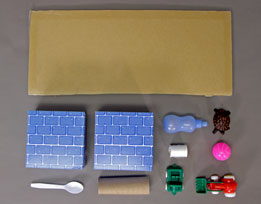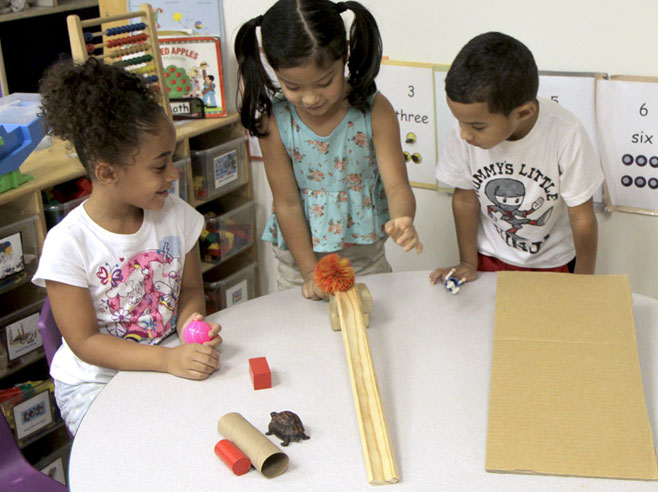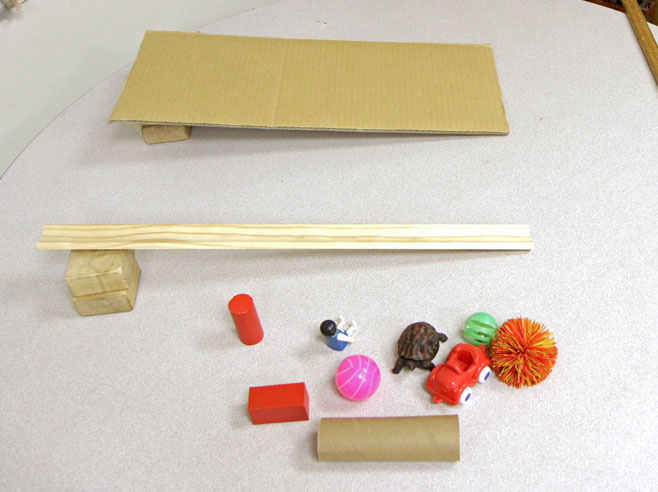Children build ramps and then send small toys or objects down the ramps.
Materials

- Blocks or other objects to prop up ramps
- Cardboard flats, foam core sheets, or wooden boards
- Classroom objects and toys to send down ramps (children’s choice)
Directions: Lessons 2, 3, 4, 10
Learning Center
- Invite children to build ramps with the materials in the block corner and to send small toys rolling, sliding, and tumbling down the ramps.
- Engage children in conversations as you circulate through the Learning Center. Review how gravity is a force that makes objects fall down. Encourage a focused ramp conversation and support children in observing, describing, and comparing different ramps and the ways in which different toys move down them. Possible discussion ideas:
- Tell me about your ramp. How did you build it? Which end of the ramp is high?
- Show me what happens when you put a (block) at the top of the ramp. Which way did the block move? Did you have to give the block a push to make it slide down? What force made the block slide down?
- Put another object or toy on your ramp. How do you think that (truck) will move down the ramp? Will it slide like the block? Tell me more about that.


